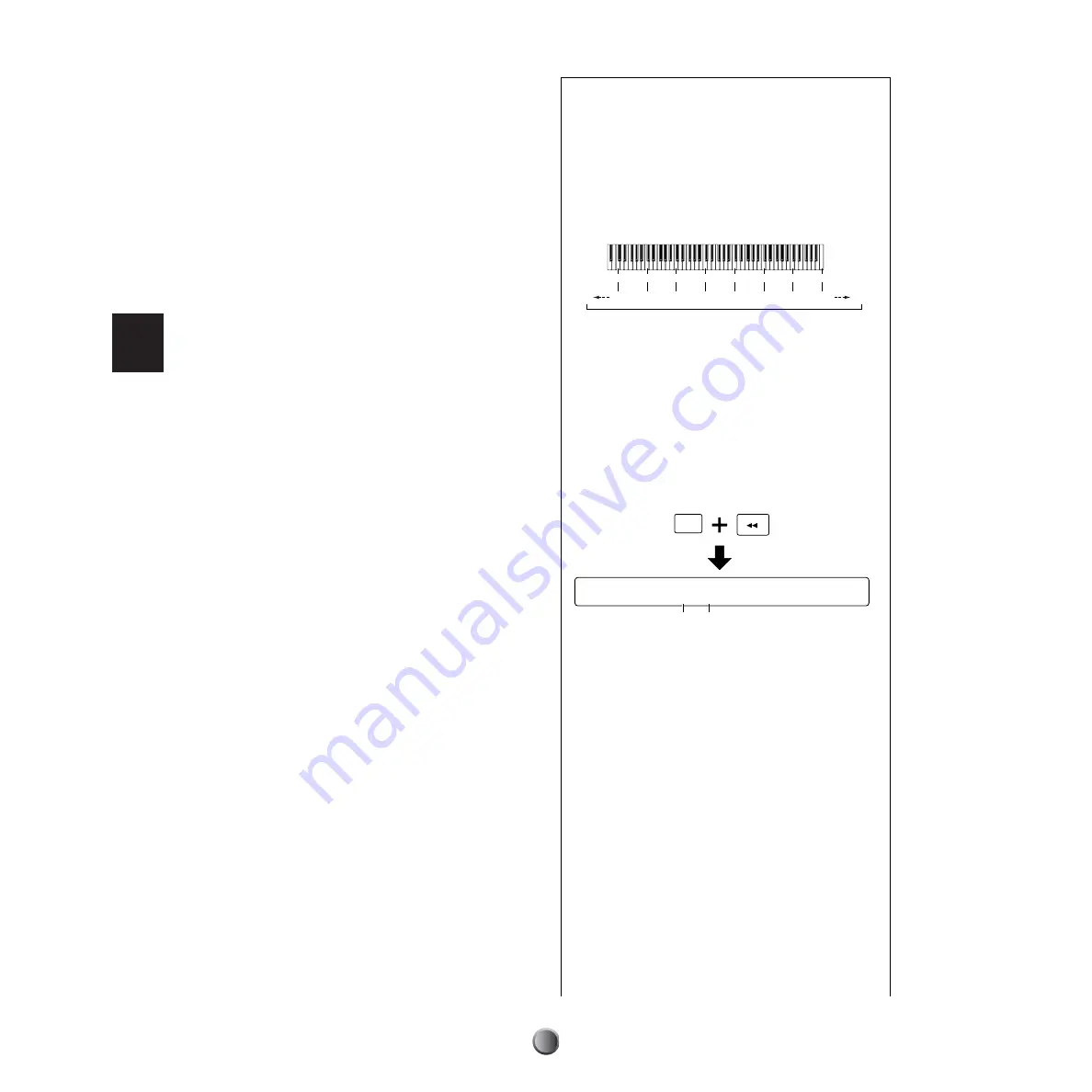
Edit Section
42
3
Note#
Assign a note number for the note
2
of the target input
1
.
Since the note number is shown with its note name (key and
octave), both will change accordingly as you turn the
associated knob. Also refer to the column below for more
about the note number.
❏
Settings:
• off: Use this as end mark for the phrase. If you play a six-note
phrase by setting to an alternate mode, set the 7th note to off.
This enables you repeat the phrase by continuously hitting the
pad. For stack modes, this setting has no effect.
• note number: Note numbers below 13 (C#-1) or above 94
(A#5) are shown in brackets. This means they will be output as
MIDI events, but will not play sounds from the built-in tone
generator.
• skip: Available only for alternate modes. Use this as a rest mark
for the phrase. This enables you play a phrase containing rests
by repeatedly hitting the pad.
n
An asterisk (*) displayed to the left of a note number means that the
same note number for MIDI channel 10 has been assigned
elsewhere, warning you that the same drum voice would be
triggered from multiple pads. For your information, copying trigger
settings from a Preset kit (page 44) ensures that the 1st note for each
trigger input will sound a proper drum voice (e.g., bass drum for
KICK, etc.).
4
GateTime
Set a gate time (note length) for the note number
3
to match
the note length with the drumming or main song tempo, or
to naturally sound a phrase containing rests. For the note on
the channel 10
5
(drum voice), its note length is determined
in conjunction with the voice settings (page 52).
❏
Settings:
0.0s~9.9s (in 0.1s increments), =1st
n
For triggering a chord (multiple notes in a stack mode), you can
easily set the same gate time to all notes. Set any necessary gate time
to the 1st note, then set the same value to the rest of the notes.
5
Channel
Set a MIDI channel for the note number
3
. This channel
will be used for both transmission and reception. You can use
this channel for playing the built-in tone generator from an
external MIDI controller, as well as sending the Note On
event to an external sound module by hitting the pad.
❏
Settings:
1~16, =1st (same as GateTime, convenient for triggering
a chord or a phrase)
S e t t i n g t h e N o t e N u m b e r s
MIDI note numbers are used to specify the pitch of a
sound. Middle C, for example, is note number 60. In
general, each note is indicated by its name and octave,
such as C3 for middle C. So the note an octave above
C3 is C4, and the note number is 72.
This standardization makes things easier when playing
notes on an external sound module.
You can easily set multiple note numbers for a chord
or a phrase in the [TrgMIDI2] page (only available in
this screen).
U s i n g a C h o r d N a m e
To call up the following page, simultaneously hold
down the SHIFT button and press the Rewind
button.
Use the second-to-left and center knobs to specify a
chord by its root and type. Also, you can
automatically set the chord to the current trigger
input, using up to five note numbers.
❏
Settings:
• Root: C, C#, D, D#, E, F, F#, G, G#, A, A#, B
• Type: Maj7, Maj, 6th, m7(11), Maj9, add9, min, min6,
min7, m7(b5), mM7, min9, madd9, 7th, 7(#5), 7(b9),
7th9, 7(#9), 7(#11), 7(b13), 7(13), 7sus4, sus4, dim, aug
After you’ve selected a chord, press the ENTER/YES
button. An “Are You Sure?” confirmation message will
appear in the display. Press the ENTER/YES button
again to actually set the note numbers. Press the
EXIT/NO button to cancel the operation. When you
return to the previous page, try hitting the pad. You
can play the chord in a stack mode, or arpeggio in an
alternate mode.
24
0
MIDI note number
C0
36
C1
48
C2
60
C3
72
C4
84
C5
96
C6
108
127
C7
[Chord] ChordName
C Maj7
Root Type
SHIFT






























